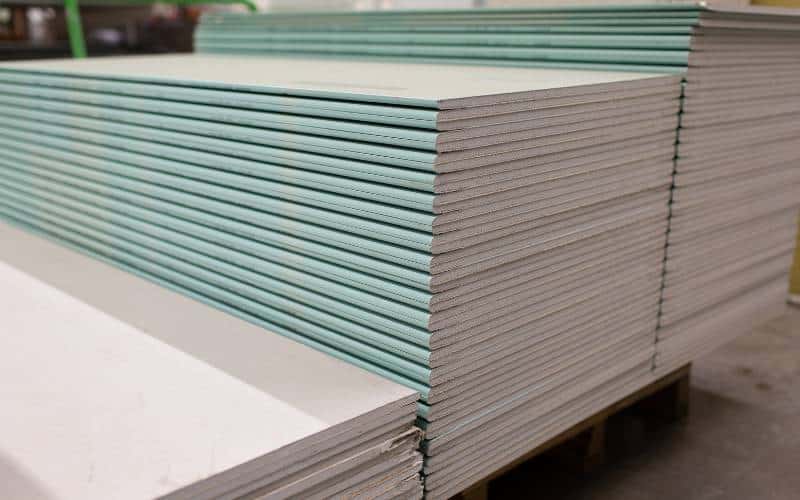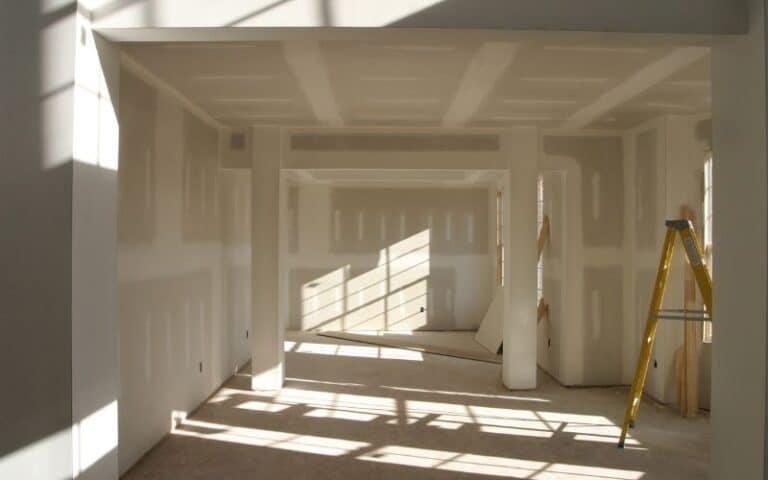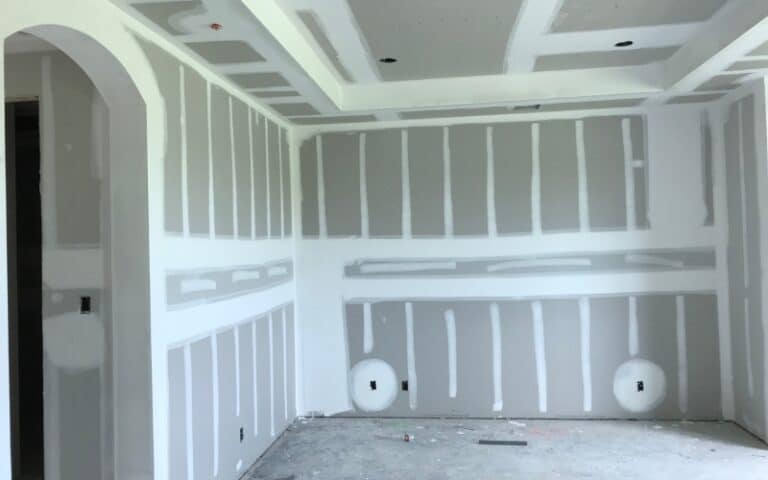Most people prefer using drywalls to construct walls and ceilings in their homes because drywalls are durable, easy to install, and perfect for creating unique architectural designs.
Due to the widespread purchase and frequent use of wallboards, manufacturers package them in bundles to ease sales and transportation.
But when buying wallboards for interior construction, people often seek information on the number of sheets in a bundle to make proper estimates.
Well, I have all the answers right here.
Drywall comes in pairs, so a bundle contains two sheets of drywall. The two pieces face each other, and their ends are taped to bind them together. The various drywall sizes (4 by 8 feet, 4 by 12 feet, 4 by 16 feet, and 2 by 2 feet) all adhere to this packaging description.
You will learn more about drywall packaging and its weight in this article. I’ll also discuss the number of drywall sheets a truck can carry and how vehicles convey wallboards.
You’ll have learned new and valuable information about drywall by the end.
Ready for a Drywall Quiz?
How Many Sheets of Drywall Are in a Bundle?

Gypsum board is an essential construction material that builders use. It’s almost impossible to pass by a construction site without seeing stacks of sheetrock on the floor.
Though you may be more familiar with the term “drywall,” the construction material has many other names, including sheetrock, wallboard, gypsum board/ panel, plasterboard, slap board, etc.
So, if you see any of these terms within the course of this piece, don’t get confused; I’m referring to the same thing.
Let’s move to the main question with that out of the way. Drywalls come in bundles, and each bundle contains two sheets.
So, when buying drywall in bundles, you should know that sellers count the pair as one.
But bundles are just one of the packaging forms of plasterboards. To grasp your construction requirements, you must understand the other forms of packaging.
The packaging and organization of drywall are essential as they prevent deformation and distortion while in storage.
Other than bundles, sheetrock also comes in stacks and pallets. Stack refers to sheets of drywall in a vertical pile.
On the other hand, pallet refers to horizontal and vertical stacks of drywall with panels supporting the edges to keep them in place.
The difference between stacks and pallets is the presence of the flat wooden surface, which serves as a carrier beneath.
The number of drywall sheets in stacks and pallets often varies depending on the weight, thickness, and size.
So, below is a table outlining the types of drywall, their specifications, and the number of sheets per stack.
| Type | Thickness | Number of Sheets per Stack |
|---|---|---|
| 4 by 8 feet. | ½ inch | 16 to 18 |
| 4 by 12 or 16 feet. | ¼ inch | 26 |
| 4 by 8 feet. | ⅜ inch | 18 to 20 |
| 4 by 8 feet. | ⅝ inch | 12 to 14 |
This table’s number of sheets per stack is acceptable but may differ with various manufacturers.
How Many Sheets of Drywall Can a Truck Carry?
Trucks are the most appropriate means of transporting gypsum panels. It’s easy for forklifts to lift stacks or pallets of drywall and place them in a truck.
Using a vehicle other than a truck to transport drywalls is risky. This is because motorbikes are narrow and lack a stable, flat, wide surface to convey the panels.
Cars boots lack adequate space for carrying the stacks of sheetrock. And if you squeeze the panels into the boot, they may bend or break.
So, the most suitable options for safely transporting gypsum panels are trucks. In addition, trucks are lofty and have adequate space, so there is no danger of damage.
But before transporting drywall, you need to plan the logistics. Therefore, knowing how many drywall sheets a truck can carry is necessary.
But to know the number of drywall sheets a truck can carry, you must confirm its weight limit.
The weight limit will serve as your guide in preventing the conveyance truck from being overloaded.
So, there are three trucks commonly used for transporting drywall. These are 1-ton, ¾ ton, and ½ ton trucks.
The maximum weight capacity of a one-ton truck is 2000 lbs, so this truck is fit to carry large loads.
As for three-quarter-ton trucks, they weigh 1500 lbs and can transport a sizeable amount of drywall. However, they can’t hold as much load as one-ton trucks.
Lastly, half-ton trucks weigh 1000 lbs and are suitable for carrying light loads.
These trucks all have 8 feet beds that can comfortably carry 4 by 8 ft drywalls without the edges hanging out.
So, now that you know the capability of the transporting trucks let’s see how many 4 by 8 sheets of drywall they can convey.
| Trucks | Number of 4 by 8 Feet Drywall Sheets |
|---|---|
| One ton. | 60. |
| Three-quarter ton. | 45. |
| Half a ton. | 30. |
Transporting drywall can be cumbersome. So to save yourself the trouble, ask your seller if they offer delivery services. If they do, opt for it and thank me later.
How Much Does a Sheet of Drywall Weigh?
The weight of a sheet of drywall depends on its size. Each size of drywall has unique measurements and specifications.
So to know how much a sheet of drywall weighs, you first have to decipher its thickness.
There are four standard thickness measurements for drywalls that weigh differently. These are;
- ½ inch.
- ¼ inch.
- ⅜ inch.
- ⅝ inch.
Below is a table containing the weight per sheet and the weight per stack of each wallboard size.
| Thickness | Weight Per Sheet | Weight Per Stack |
|---|---|---|
| ½ inch | 51.2 lbs | 819.2 – 921.6 lbs. |
| ¼ inch | 38.4 lbs | 748.8 lbs. |
| ⅜ inch | 44.8 lbs | 777.6 – 864 lbs. |
| ⅝ inch | 70.4 lbs | 844.8 – 985.6 lbs. |
It is general knowledge that the weight of a 4 by 8 feet sheetrock ranges from 45 – 100 lbs depending on its density.
However, you should note that the weight per sheet of gypsum boards may differ depending on the brand you purchase.
But you have nothing to fear as the weight difference is minimal. So, you can carry out your calculations using the figures above.
With this knowledge, you can calculate the weight for different quantities of drywall by multiplying the weight per sheet by the number of sheets you have.
The result you get will help you to plan and prepare for the transportation of your panels.






